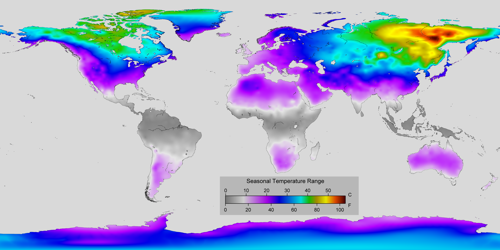-
Curriculum alignment
Science
AC9S9U01 – compare the role of body systems in regulating and coordinating the body’s response to a stimulus, and describe the operation of a negative feedback mechanism
AC9S9U05 – apply the law of conservation of energy to analyse system efficiency in terms of energy inputs, outputs, transfers and transformations
AC9S9H02 – investigate how advances in technologies enable advances in science, and how science has contributed to developments in technologies and engineering
AC9S9I08 – write and create texts to communicate ideas, findings and arguments effectively for identified purposes and audiences, including selection of appropriate content, language and text features, using digital tools as appropriate
Design and Technologies
AC9TDE10K03 – analyse and make judgements on how the characteristics and properties of materials are combined with force, motion and energy to control engineered systems
AC9TDE10K06 – analyse and make judgements on how characteristics and properties of materials, systems, components, tools and equipment can be combined to create designed solutions
- S
- T
- E
- M
Thermoregulation in spacesuits
Years 9 and 10
Open the lesson by exploring the temperature ranges students have experienced.
Students can find out the annual minimum and maximum temperatures for their locality using Bureau of Meteorology data for the nearest weather station.
Ask students if anyone has experienced greater temperature extremes and discuss where this occurred. The most extreme annual temperature fluctuations on Earth occur at higher latitudes as a result of the difference in day length across the year.
Image created by Robert A. Rohde for Berkeley Earth. Released under Creative Commons by Robert Rohde in his professional capacity as Lead Scientist for Berkeley Earth
With students, discuss the ways humans solve the problem of living in environments with large temperature ranges. Explore the heating and cooling technologies used to maintain habitable living conditions.
Girls in focus
An alternative hook for this lesson could be to explore NASA’s First Woman graphic novels and interactive, which follow the experiences of Callie, a female astronaut on a lunar base. As a class, explore the human elements of the story before engaging with the STEM components. Discuss the qualities Callie demonstrates in the story. Support students to notice how she responds to challenges and what shapes her decision-making. Use the novels and interactive as a hook to explore the technologies required to support life in space.
Learning input
Explain to students that these temperature ranges are nothing compared to the temperature fluctuations on the moon or on Mars.
|
Planet |
Minimum surface temperature °F (°C) |
Maximum surface temperature °F (°C) |
|
Mercury |
- 275°F (-170°C) |
+ 840°F (+ 449°C) |
|
Venus |
+ 870°F (+465°C) |
+ 870°F (+ 465°C) |
|
Earth |
- 129°F (- 89°C) |
+ 136°F (+ 58°C) |
|
Moon |
- 280°F (- 173°C) |
+ 260°F (+ 127°C) |
|
Mars |
- 195°F (- 125°C) |
+ 70°F (+ 20°C) |
Data sources temperature:
Mercury: Worldbook at NASA, April 12, 2010.
Venus: Worldbook at NASA, April 12, 2010.
Earth: Global Measured Extremes of Temperature and Precipitation, NOAA, April 12, 2010
Moon: Worldbook at NASA, April 12, 2010
Mars: Worldbook at NASA, April 12, 2010
This means that expeditions and sustained human habitation on the moon, Mars and other planets will require a solution to the challenge of maintaining habitable temperatures in the face of massive temperature fluctuations.
Even the International Space Station experiences a wide range of temperatures. When it faces the Sun, the external temperature is around 121°C, but when Earth blocks the Sun, the external temperature is a very chilly -157°C. On Earth, heat is transferred through the air mainly due to conduction or convection, but in space there is no air, so heat is transferred through thermal radiation. (Source: ScienceABC)
As a class, watch the NASA video explaining spacesuit design.
Keeping Cool in Space
Next, watch this video explaining the Spacesuit Evaporation Rejection Flight Experiment (SERFE).
Spacesuits for the next explorers
As the class views the video, note key features of the suit and see if students can answer the following questions:
- Where does transfer of heat occur within and outside the astronaut’s suit?
- How does the suit achieve cooling and warming?
- How does the suit determine the need for cooling or warming?
- What is the impact of changes in gravity?
- What are the key risks and mitigations associated with the suit?
Girls in focus
Girls may not realise the diverse skills and backgrounds of space technology designers.
Share this article about Prada’s role in designing NASA’s new spacesuits and this article about an unconventional pairing of a costume designer and a spacesuit designer that led to the development of a space design firm.
Use these articles as a basis to talk about the creative potential of STEM careers.
Learning construction
Students conduct further research into spacesuit thermoregulation technologies. They create a presentation in PowerPoint or Keynote that shows key features of spacesuit temperature maintenance. The presentation must include an animation to show how the thermal control system operates in extreme temperatures.
A list of possible resources is included in the Resources section.
Students must ensure their animation addresses:
- where transfer of heat occurs within and outside the astronaut’s environment
- how cooling and warming occur
- how the suit determines the need for cooling or warming.
The presentation should also address key considerations for design, materials and processes given the use requirements of the suit.
Students should consider how best to communicate the information through their animation and slides to ensure clarity and maximise audience engagement.
Girls in focus
Girls may not realise the diverse skills and backgrounds of space technology designers.
Share this article about Prada’s role in designing NASA’s new spacesuits and this article about an unconventional pairing of a costume designer and a spacesuit designer that led to the development of a space design firm.
Use these articles as a basis to talk about the creative potential of STEM careers.
Learning construction
Students conduct further research into spacesuit thermoregulation technologies. They create a presentation in PowerPoint or Keynote that shows key features of spacesuit temperature maintenance. The presentation must include an animation to show how the thermal control system operates in extreme temperatures.
A list of possible resources is included in the Resources section.
Students must ensure their animation addresses:
- where transfer of heat occurs within and outside the astronaut’s environment
- how cooling and warming occur
- how the suit determines the need for cooling or warming.
The presentation should also address key considerations for design, materials and processes given the use requirements of the suit.
Students should consider how best to communicate the information through their animation and slides to ensure clarity and maximise audience engagement.
-
Rubric
Assessment
Criteria
Beginning
Achieved
Exceeded
Heat transfer modelling
Models direct solar radiation to the suit and radiation of body heat to the suit interior.
Models direct solar radiation to the suit; radiation of body heat to the suit interior; and conduction and convection of heat to circulating water/gas.
Models direct solar radiation to the suit; radiation of body heat to the suit interior; and conduction and convection of heat to circulating water/gas. Also models thermal insulation properties of the suit.
Considerations given to the use requirements of the suit
Identifies simple use requirements related to astronaut movement and the space environment.
Identifies use requirements related to dynamic astronaut movement and comfort, the space environment and mission length.
Identifies use requirements related to dynamic astronaut movement and comfort, the space environment, mission length and unexpected component failure.
Communication
Animation communicates features of the suit, demonstrating selection of some appropriate content, representations, language and text features.
Animation clearly communicates operation of key features of the suit, including appropriate use of content, representations, language and text features.
Animation communicates operation of key features of the suit effectively and in an engaging way, including selection of appropriate content, representations, language and text features.
.
Resources
- Cadogan P (2015) The past and future space suit. American Scientist, 103(5).
- Mudawar I (2023) Heating and cooling space habitats isn’t easy – one engineering team is developing a lighter, more efficient solution. The Conversation.
- NASA (2020) Spacesuit Evaporation Rejection Flight Experiment (SERFE).
- Stroming JP & Newman DJ (2019) Critical review of thermal management technologies for portable life support systems.











